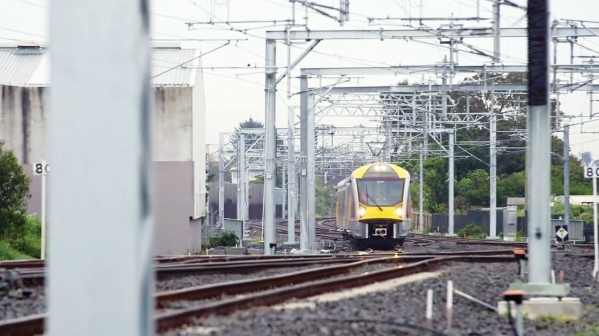The Hamilton to Auckland Intercity Connectivity interim indicative business case outlines four scenarios ranging from upgrading and electrifying the existing line to constructing a new 250km/h alignment between the two cities.
This includes:
- scenario A: extended electrification on the existing 139km 1067mm-gauge line to allow 110km/h operation, providing a journey time of 1h 53min
- scenario B: enhancement of the existing line and electrification to allow 160km/h operation, providing a journey time of 1h 28min
- scenario C: constructing a new 160km/h 1067mm-gauge electrified line, providing a journey time of 1h 19min, or
- scenario D: constructing a new standard-gauge 250km/h line, providing a journey time of 1h 9min.
All scenarios would provide a faster journey time than the commuter rail service that is due to be launched along the line next year, which will take an estimated 2h 30min. The scenarios include the construction of an underground station north of Hamilton, with five stations along the line.
The report says that the development of fast rail along the Hamilton - Auckland corridor warrants further investigation and analysis, but warns that any significant enhancement in journey time requires a high level of investment and all scenarios are expected to attract ridership below the threshold level of what is needed for a benefit:cost ratio (BCR) of 1.0.
The analyses shows that land near Hamilton city centre and a northern Hamilton stop is likely to experience the greatest land value uplift under the faster rail scenarios. Changes in land value could stimulate additional growth within the station catchment areas reducing the gap in patronage needed to justify a BCR of 1.0.
The higher investment scenarios which require the construction of a completely new line between southern Auckland and northern Hamilton fall significantly short of delivering ridership that generate a BCR of 1.0.
All scenarios require further stimulus over and above what is expected through the introduction of fast rail on its own, and the wider stimulus package should encourage growth within the station catchment areas to allow for ridership levels that support a BCR of 0.6 or higher.
A better connection between Waikato and Auckland together with a compact and connected Hamilton city would enable both cities to benefit economically, the report found.
Based on the business case findings, the report says key characteristics in future studies should:
- explore corridor options that use existing infrastructure where possible to drive down costs, focusing on running speeds up to 160km/h under Scenario B
- look to serve long distance commuters and business trips, with stations placed to serve business needs, and provide connections to Auckland airport and Manukau city centre to enhance ridership potential, and
- include a stop in northern Hamilton and southern Auckland to stimulate development to enhance ridership.
For detailed data on rail projects around the world, subscribe to IRJ Pro.

